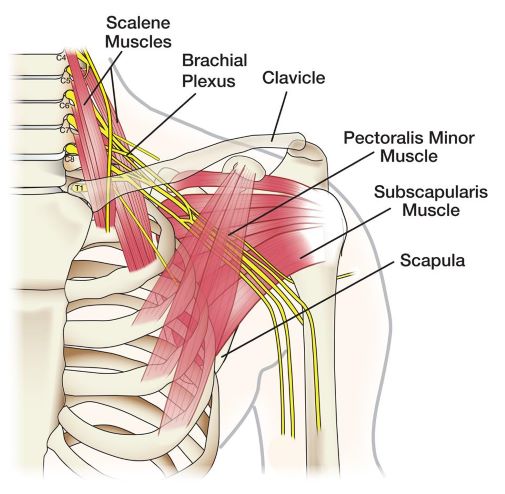Adelaide & Hills HAND THERAPY
|
Hand Therapy blog post
What is the Brachial Plexus?
The Brachial Plexus is the name given to the network of nerves as they leave the neck on the way to servicing the shoulder, arm and hand. These nerves are responsible for all shoulder, elbow, wrist and hand movements as well as feeling to these areas. Nerve also also have other functions such as sweating, getting goose bumps & hairs standing up when you are cold and knowing where your joints are positioned- even when you can't see them. What is a Brachial Plexus injury? Injury to the Brachial Plexus is when there is a change in the normal continuity of a part of a nerve or several nerves in the Brachial Plexus. The damage to the nerve results in disruption or stopping of the nerve messages as they travel from the spinal cord to the arm. Symptoms of Brachial Plexus Injury As a result of the messages being blocked or stopped the muscle will not get usual messages from the brain. And without the usual messages from the brain, the muscles will not be able to move properly; they may be weak or lack movement all together. In the same way (but back to front) the messages that our skin give us about feeling; temperature, vibration, texture, will not get to the brain as usual. As the messages from the skin won't be able to travel along injured parts of the nerve where the damage has occurred. Therefore, following Brachial Plexus Injury a person will likely have altered, decreased or no feeling in the part of the arm that is usually serviced by the nerves that are damaged. People may experience other symptoms as a result of nerve damage, including; decreased sweat, and therefore slippery hands which can lead to dropping items. Or when it is cold notice a lack of goosebumps and the hairs not standing up. Hair and nail growth in the injured arm and hand may change. And sometimes the involved hand can look a different colour to the other, for example a mottled appearance, or paler or more blue or red in tone. Types of Brachial Plexus injury Damage to the Brachial Plexus can occur due to a traumatic injury or non-traumatic damage;
Some injuries are transient, that is, symptoms are temporary and full recovery will be anticipated within weeks to months. Other injuries will result in permanent loss of movement and feeling to some or all upper limb muscles, leaving operation/s the only option to regain movement. Hand Therapy blog posts
0 Comments
Your comment will be posted after it is approved.
Leave a Reply. |
Author Jo MarshClick here to edit Archives
March 2020
|



 RSS Feed
RSS Feed





